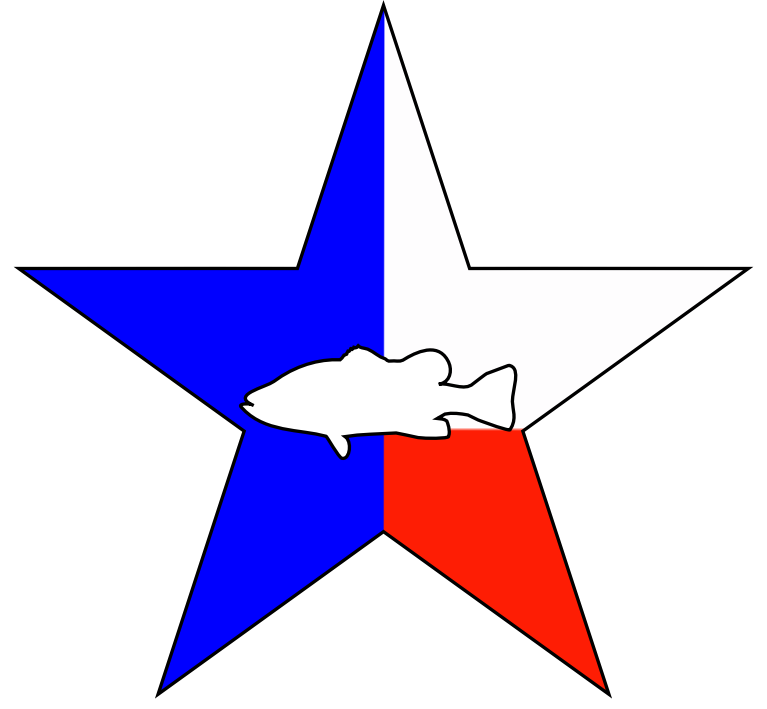Fish Stocking
Stocking your lake is the most rewarding and important decision when establishing your ecosystem. While it’s easy to get carried away and go straight into adding game fish, don’t forget establishing your forage fish is the most important part. Oftentimes, people are impressed by how quickly they are able to see a return on their investment when they take the time to establish their food chain appropriately from the beginning. You’ll notice there is no set formula for stocking your lake, that’s because it is important to tailor the plan for your lake and personal goals. No matter whether you are looking to create a trophy bass lake, kid-friendly fishing, or just a well balanced lake, feel free to contact me and we can create a personalized plan for your goal. Below you will find the species profiles for forage and game fish. These categories are based on most common use of the specific fish, however in some cases a species may be used for other purposes depending on your management goals.
Forage Fish
This group of fish are typically used to create a food chain for the predatory fish in your lake. Some are stocked only in new ponds while others can be added as supplemental forage at any time.
Bluegill Sunfish
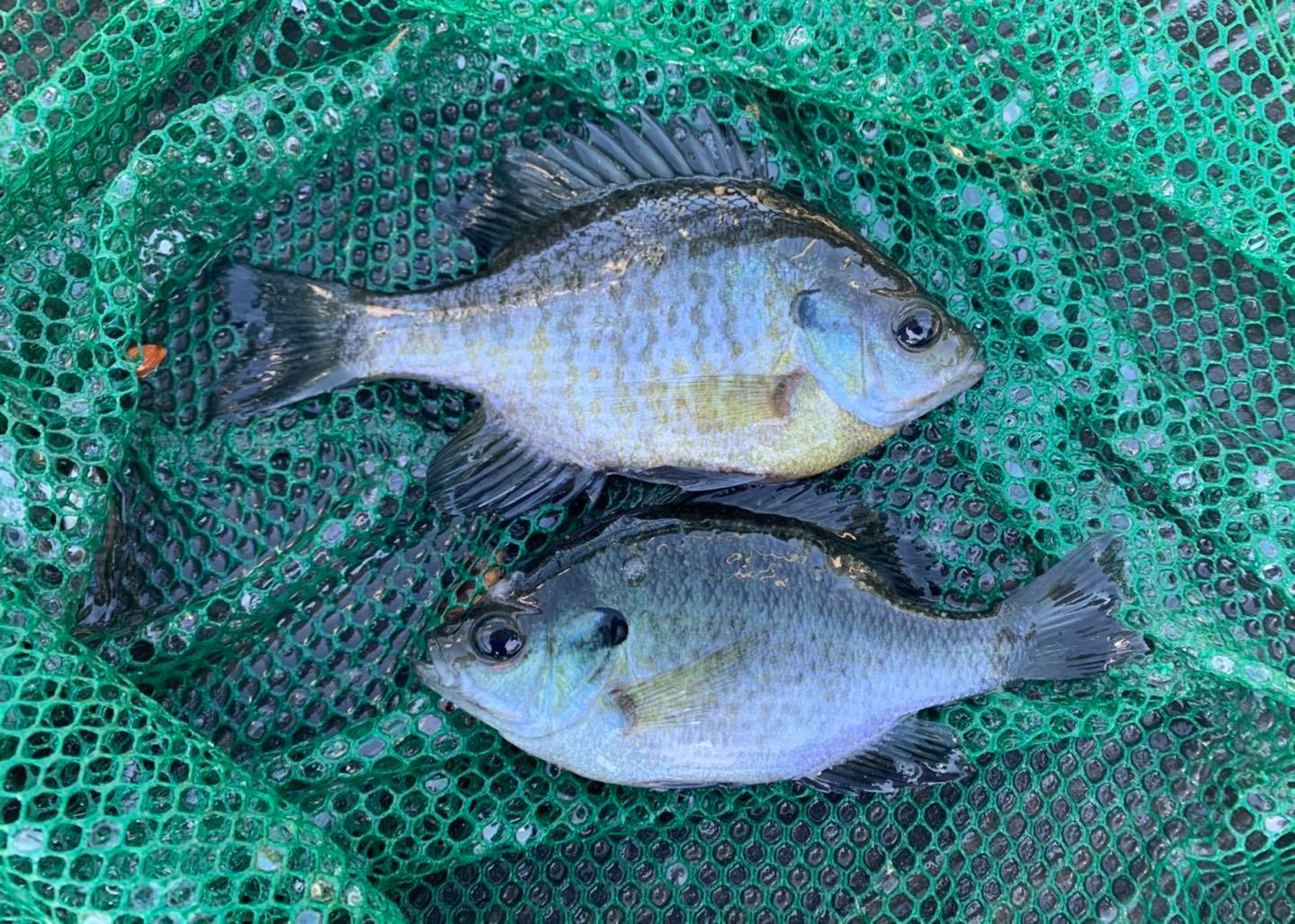
Bluegill Sunfish are one of the most commonly stocked forage fish in Texas. Bluegill are also referred to as Perch or Bream. The Coppernose Bluegill are typically selected for their rapid growth, maximum size, and high reproductive rates. Bluegill can grow to sizes exceeding 1lb., if fed high quality fish food. Naturally Bluegill Sunfish eat mainly aquatic insects and large zooplankton. Bluegill reproduce multiple times throughout the Spring, Summer, and early Fall. These fish will reach maturity at two years old or approximately 3 inches. Because of their high reproductive potential, large growth, and common Bluegill are used in all Largemouth Bass fisheries as the base of the food chain.
-
Essential for Largemouth Bass
-
Do Not Compete With Predators
-
High Reproductive Potential
Redear Sunfish
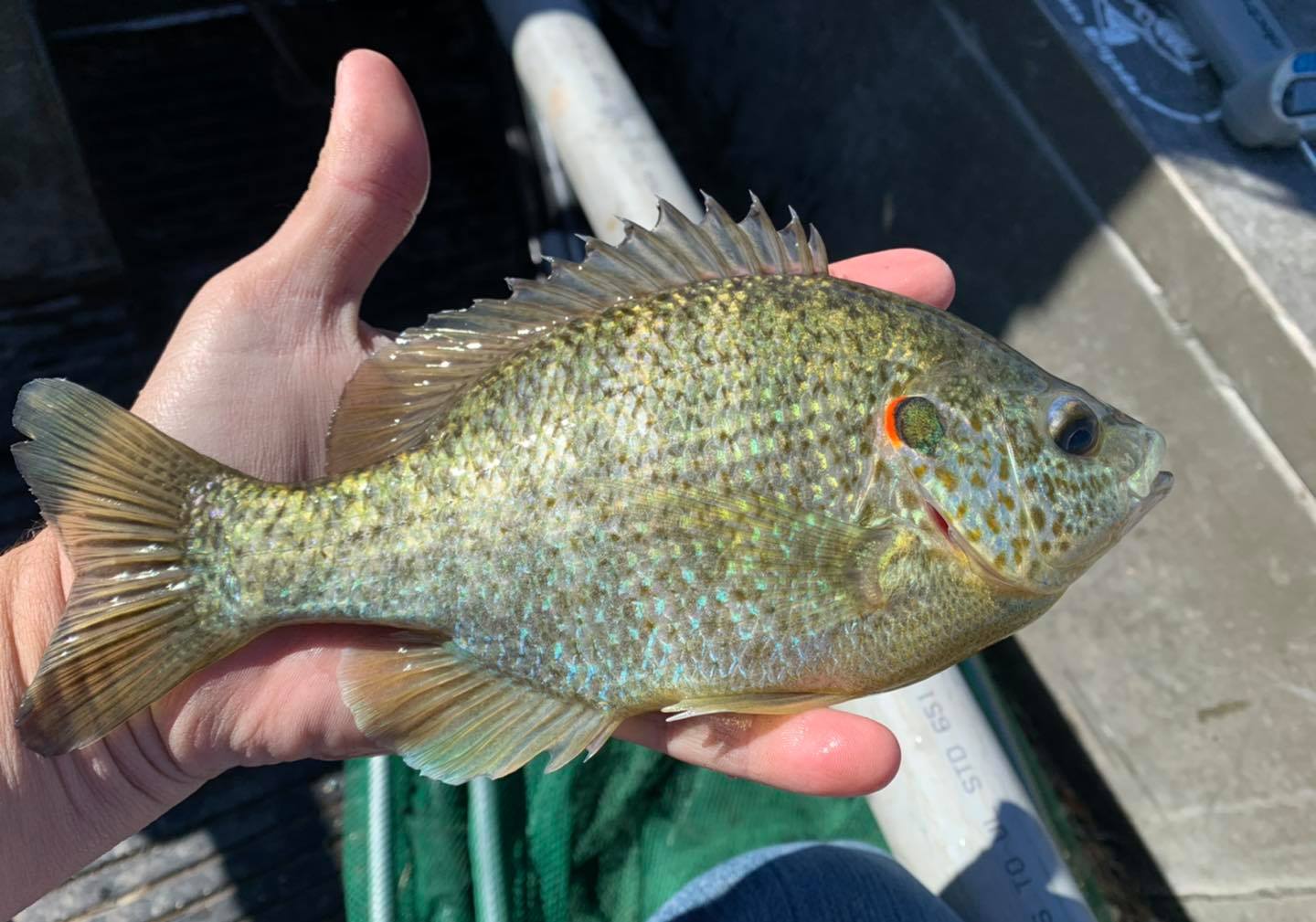
Redear Sunfish or Shellcrackers are stocked into every new and existing waterbody regardless of the future game fish management. They are primarily used to control snail populations because snails are a host species to parasites such as yellow grubs and flukes. Outside of parasite control Redear can become a quality game fish as some individuals will exceed 1 lb. Redear have a low reproductive potential and therefore should be restocked periodically to maintain a population size that ensures parasite control. They unfortunately are in limited size ranges so restocking is usually done at a high density to account for predation.
-
Control Parasites by Consuming Snails
-
Do Not Compete with Predators
-
Low Reproductive Potential and Require Restocking
Hybrid Sunfish
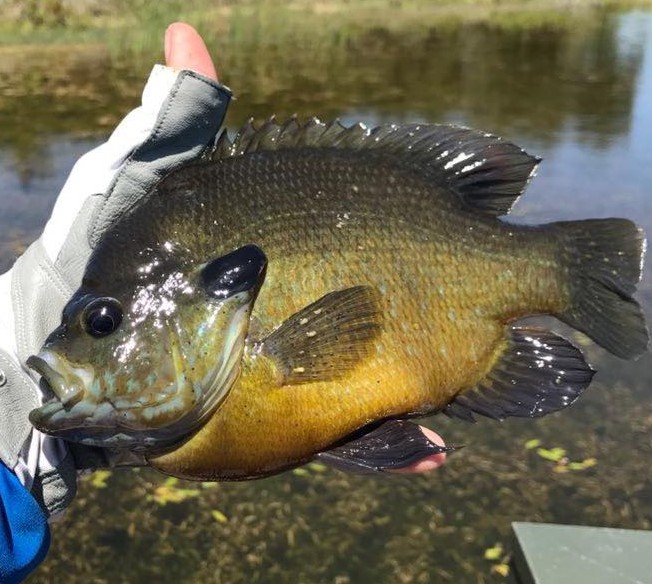
Hybrid Bluegill Sunfish are a cross between Bluegill and Green Sunfish. They have larger mouths and eat varies food types. In many situations this will lead to direct competition with young game fish for food. Hybrid Sunfish also experience very low reproductive potential and resulting offspring often are stunted in size. This can directly impact game fish growth and results in skewed population dynamics. These fish are not a good option for stocking with Largemouth Bass or Crappie. However they can be stocked with Channel Catfish because they will not tend to overpopulate and provide a possible secondary game fish for anglers.
-
Have a Large Maximum Size
-
Have Low Reproductive Potential
-
Compete Directly with Predators
Fathead Minnows
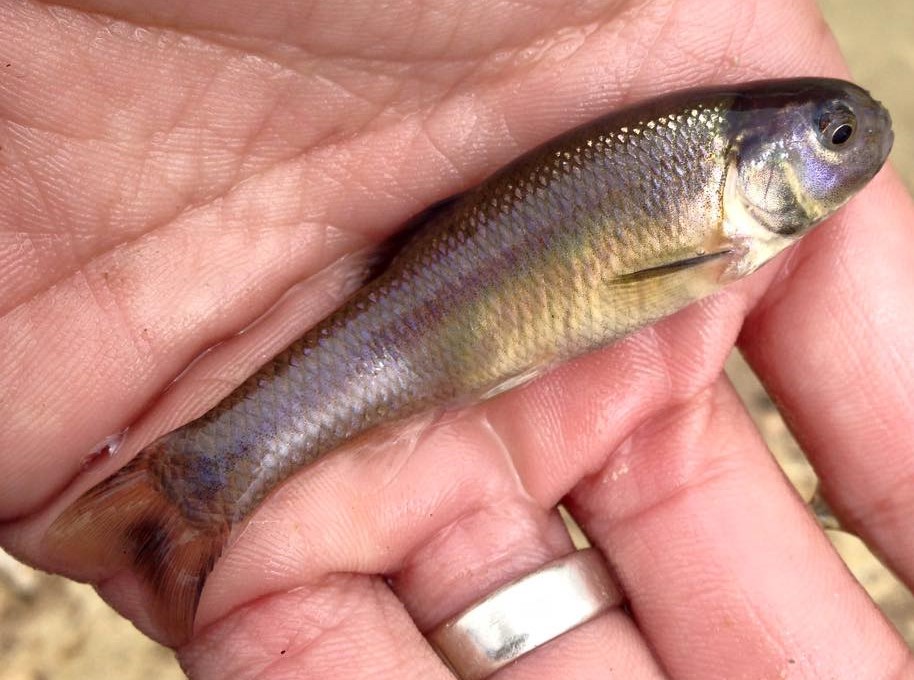
Fathead minnows are a common forage fish used in almost all initial stocking programs. These slow swimming minnows can reproduce up to 12 times per summer having as many as 12,000 eggs per nest. They build large populations quickly and provide a forage source for fingerling game fish. Although they have a high reproductive potential they do not grow beyond 2-3 inches and therefore have limited longevity in the presence of Largemouth Bass. We never recommend stocking Fathead Minnows into existing ponds as they will not survive to reproduce, instead use Fatheads to create initial growth then plan for your fish to transition to a new forage species within two years.
-
Very High Reproductive Potential
-
Stocked in Every New Lake
-
Never Restock into Existing Lakes
Golden Shiner Minnows
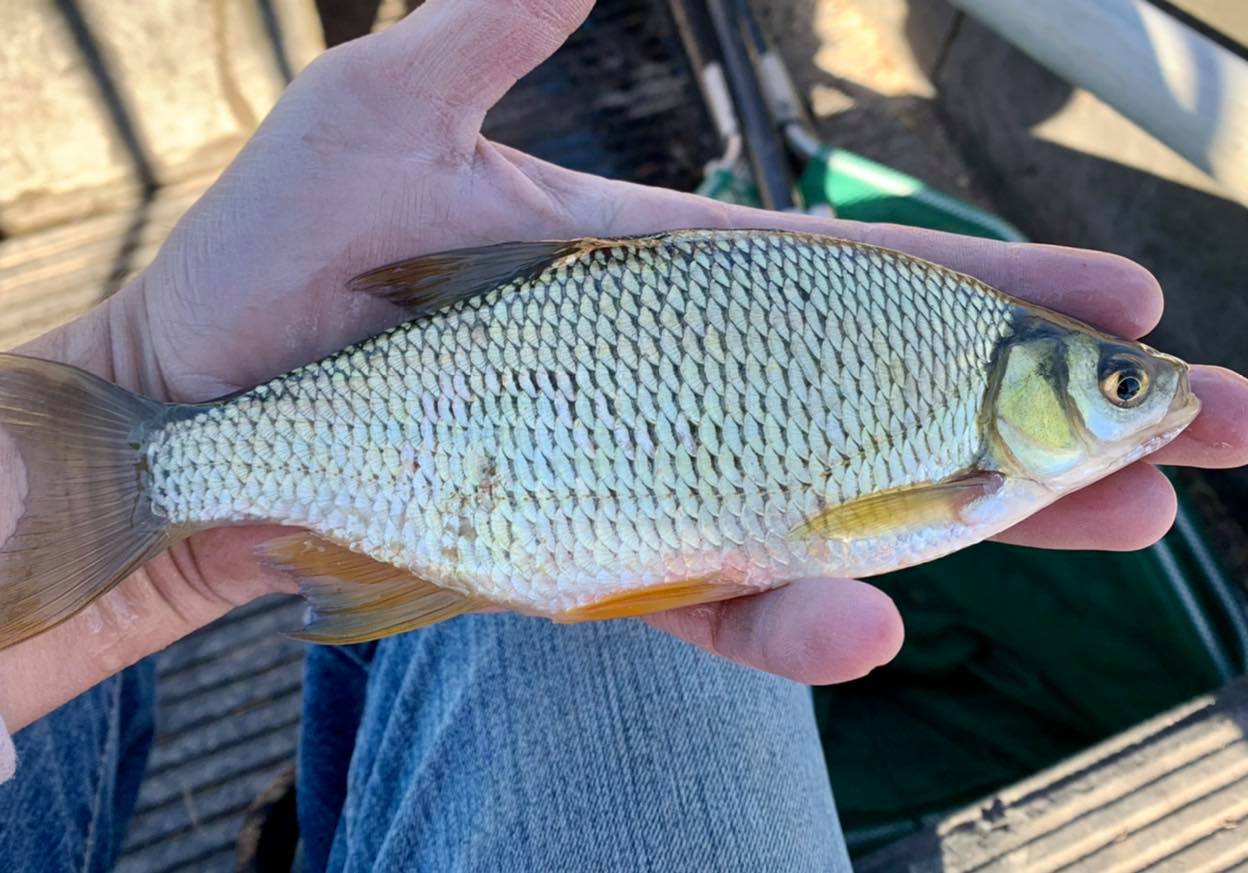
Golden Shiner Minnows are the most common baitfish used in Texas and sold at almost every bait store. Golden shiners can also make good forage fish because they can grow large, up to 8 inches. This makes some adult shiners too large to be captured by bass for many years. Golden Shiners feed on diverse food sources such as vegetation, insects, and plankton. They have limited reproductions per year and at times become nest grazers so caution should be taken before stocking these minnows into your lake. Many times the good they provide outweighs the bad so it is common to add them to Largemouth lakes, and they are essential in Crappie management strategies.
-
Large Size and Fast Swimming
-
Avalible at Almost Any Size Year Round
-
Consume Fish Eggs
Threadfin Shad
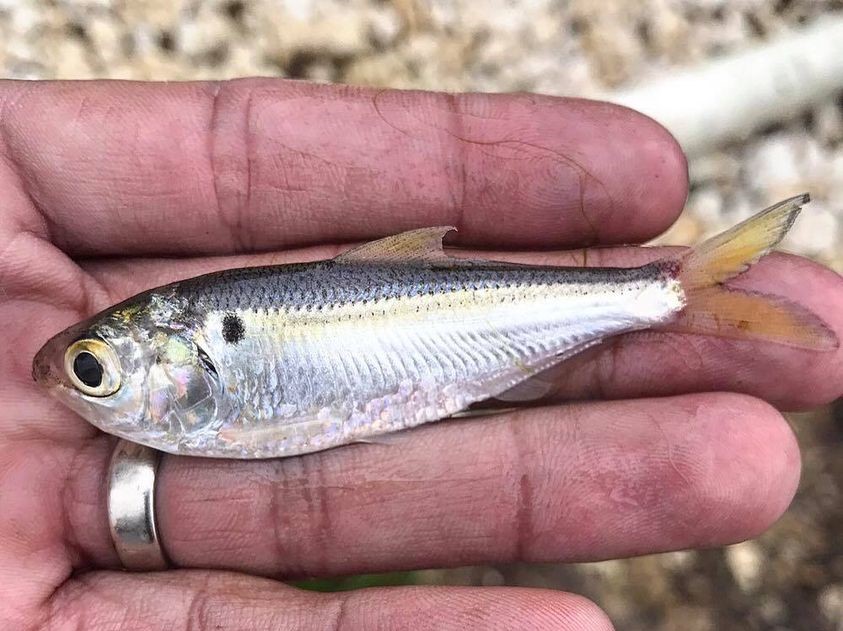
Threadfin Shad are a preferred forage fish of Largemouth Bass. Threadfin grow to a maximum size of about 6-8 inches. They feed directly on phytoplankton in open water. Threadfin begin to reproduce when water temperature reaches 70 degrees and will continue throughout the summer. The shad will lay their eggs in early morning in shallow water in large schools. They will build populations into the thousands fairly quickly. These fish are somewhat temperature intolerant and tend to die around 42 degrees. If winter waters temperatures do fall below 42 degrees it will be recommended to restock Threadfin Shad. These fish are used in trophy Largemouth Bass and Crappie management. Availability is typically limited to wild caught fish transported in Spring months.
-
Build Large Populations in Months
-
School in Open Water Changing Game Fish Habits
-
Require Restocking after Cold Winters
Gizzard Shad
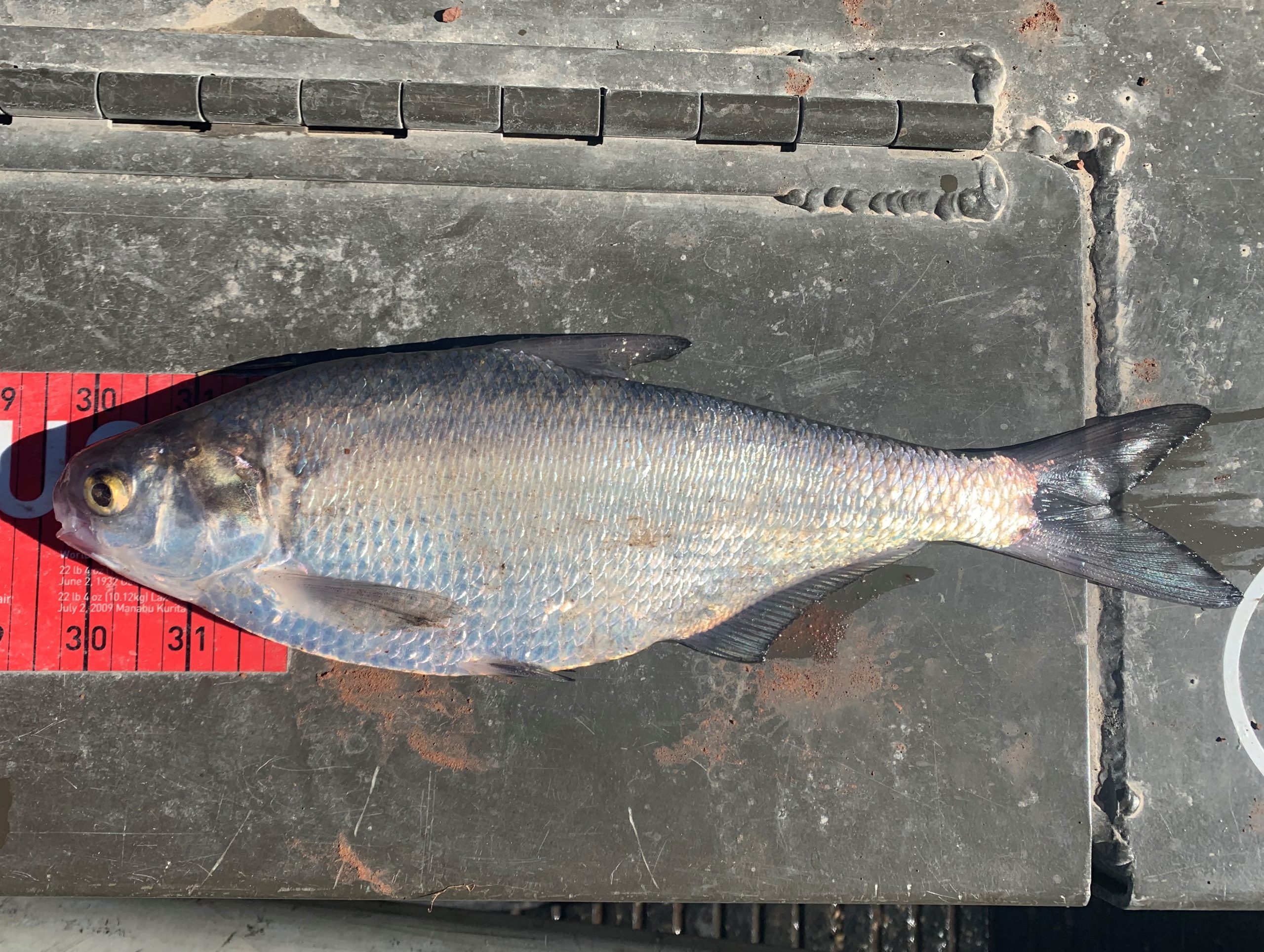
Gizzard Shad are close relatives to Threadfin however they are in many ways the opposite. These fish can grow to beyond 15 inches, are extremely hardy, and have a diverse diet. At times Gizzard Shad will consume large zooplanktons, graze decaying plant and organic matter from the sediment, and at times scavenge eggs. Gizzard Shad should not be stocked until Largemouth Bass consistently exceed 5 lbs. and all other forage options have been fully explored. Once stocked this fish will increase in density and potentially can cause issues with Bluegill Sunfish reproduction and growth.
-
Provides a Large, Hardy Soft Forage Item
-
Has a Diverse Diet
-
Has the Potential to Disrupt Bluegill Populations
Tilapia
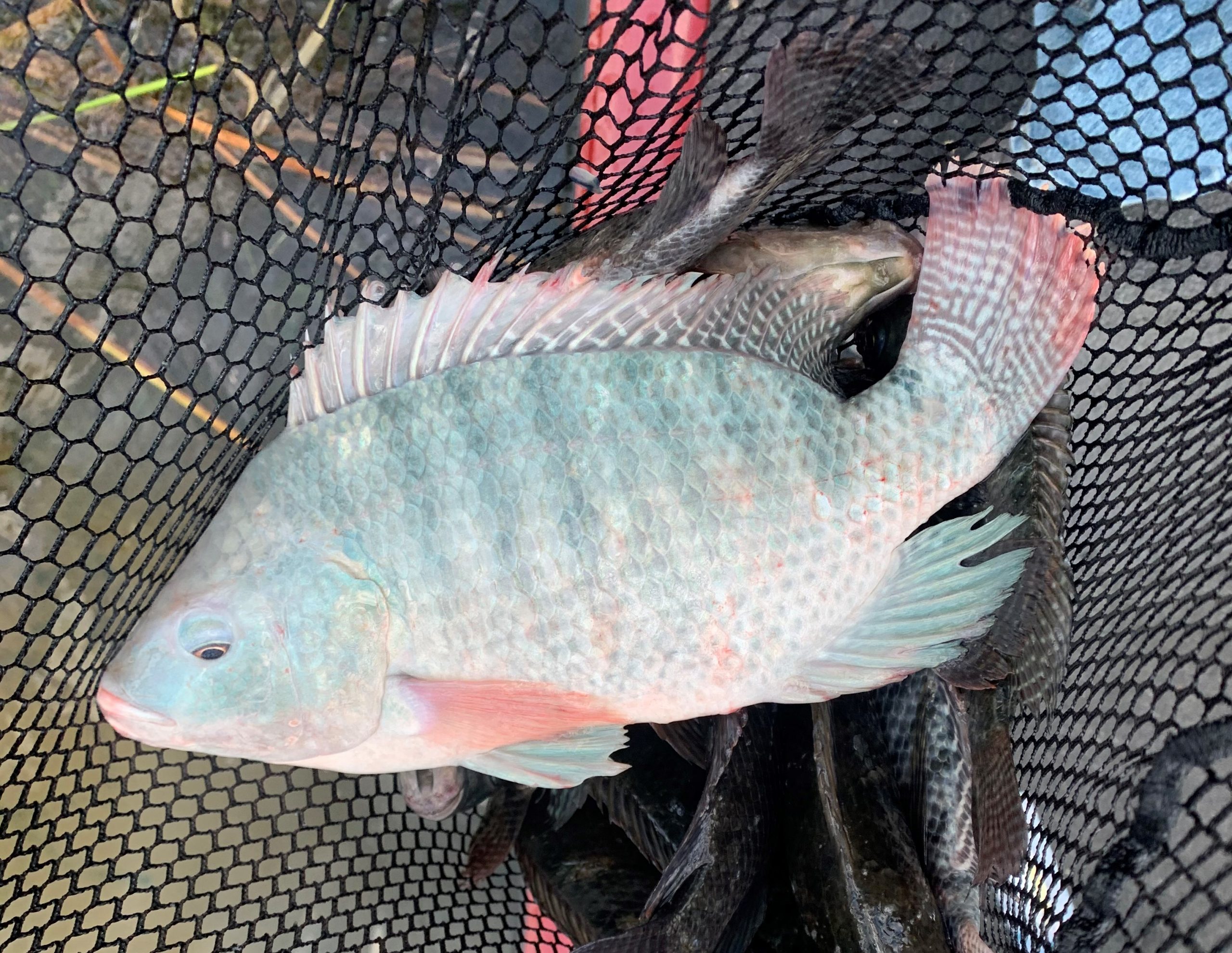
Tilapia are commonly used for algae control in ponds but they can also provide forage for Largemouth Bass. These fish reproduce once every 28 days and females guard their eggs and fry via mouth brooding. This allows Tilapia to have a near 100% survival of each reproduction. Tilapia consume primarily algae or plankton and grow quickly. They mature within several months of birth and therefore build large populations within one year. These fish will not typically survive most winters in central and northern Texas as they cannot survive water temperatures below 48 degrees. Tilapia are considered an exotic species by TPWD and require a licensed professional for stocking. You may also be required to request approval before stocking if your property falls into the “ Conservation Zone“.
-
Control Algae
-
Reproduce, Grow, and Mature Quickly
-
Require Annual Restocking and Possible Approval
Crawfish
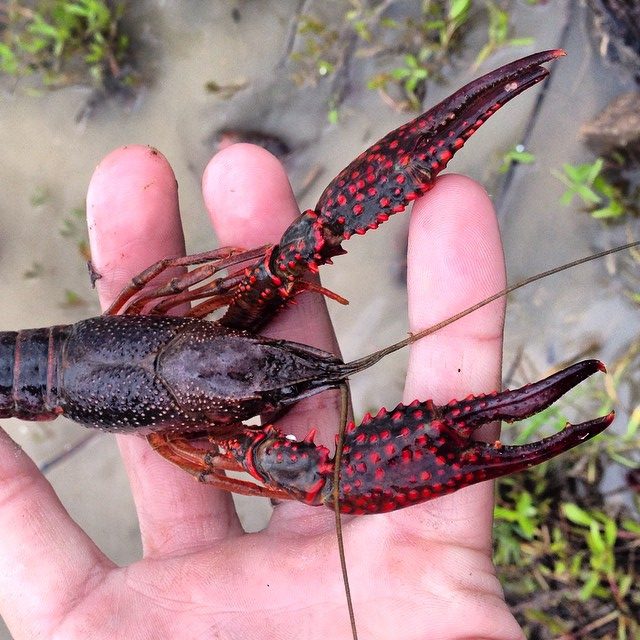
Crawfish are omnivores, which mean they will consume insects, fish, plants, and detritus (decaying matter on the lake bottom). Studies show that Bass prefer crawfish over Bluegill 9 to 1. Logistically if that is true then by stocking crawfish into a lake survival of Bluegill is greatly increased. Crawfish will thrive in lakes with vegetative, rocky, or wood cover; lack of cover equals short life expectancy due to predation. Crawfish do need excellent water quality so bottom diffusion aeration is preferred. The risk of stocking crawfish typically come from certain species ability to borrow and their tendency to carry parasites and diseases. They are typically also only for stocking in spring months.
-
Relieve Bluegill From Predation
-
Increase Short Term Aggression of Largemouth
-
Have Specific environmental Requirements.
Freshwater Prawns
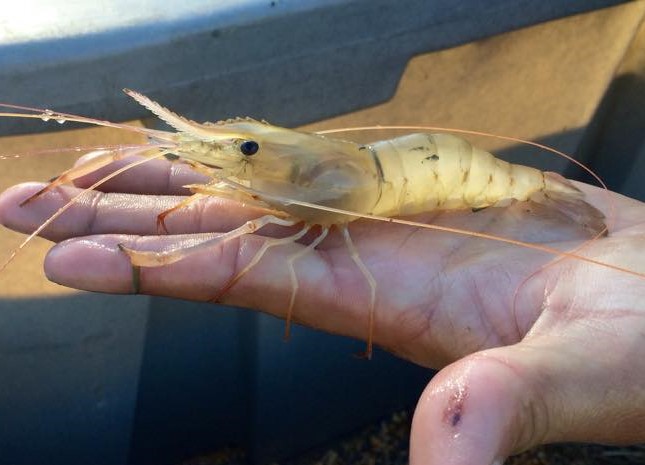
Prawns are one of the most intriguing forage items for anyone who likes a hands on approach to fisheries management. These crustaceans can grow beyond 8 inches in length in a single year. They are available initially only as juveniles and require grow out before stocking into your lake. This process can be done in a nursery pond or on cages mounted to your dock. The Prawns are stocked and fed for three to four months then harvest and released. They will not survive overwinter and must be restocked annually. Prawns will graze detritus and algae from any surface, they can also be fed a sinking food. Once stocked they provide a more protein rich forage with less shell then Crawfish. Feeding response by Largemouth Bass is similar or more aggressive then their response to Crawfish. Juveniles are available every spring for a limited number of months.
-
Quick Growth to a Large Maximum Size
-
Excellent Protein Source
-
Must be Grown on Site for Several Months Before Release
Goldfish
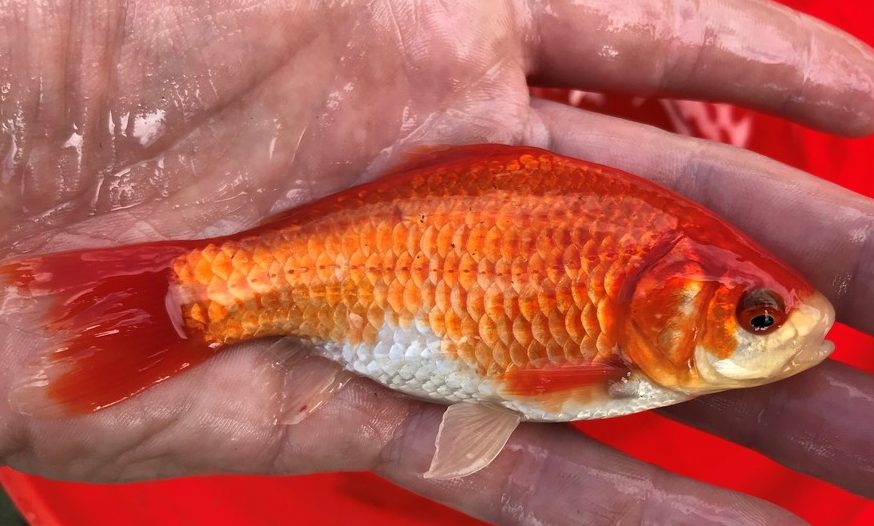
Goldfish, are of course the pet you win at a carnival or find at any aquarium store. They are small typically brightly colored fish. Goldfish provide immediate aggressive response from Largemouth Bass. They can reproduce in lakes and should not be stocked in waterbodies with outflow into public water. Goldfish consume detritus and algae from the bottom sediment along with some grazing of fish eggs. They are very similar to Common Carp so large density populations are not desirable and caution should be used before stocking into any waterbody with a history of turbidity issues. They are available year round and survive in almost all environments.
-
Brightly Colored Soft Forage
-
Largemouth Bass become aggressive once stocked
-
Multiple Factors of Goldfish Stocking Should be Considered
Rainbow Trout
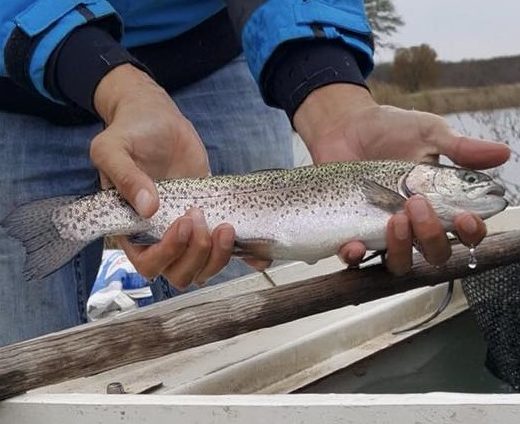
Rainbow Trout are an extremely high protein forage source for Largemouth Bass as well as a fun short term game fish to be stocked during the winter. Forage size Rainbow Trout will allow you to target feeding only trophy sized Largemouth Bass at a time when most forage fish are inactive. Trout are feed trained and will eat a floating fish food pellet. They are also available at a size ready to be used as a game fish and even at lunker size over 5 lbs. They will not survive the Texas summer and usually die at 70 degrees, therefore they are a winter only option and must be restocked yearly. Orders must be placed early in fall to secure your fish as stock is limited and comes from various out of state suppliers.
-
High Protein Forage Item
-
Avalible at Various Sizes for Targeted Management
-
Limited Annual Supply and no Expected Survival
Game Fish
This group of fish is typically used for stocking to eventually catch as an angler. They are most commonly predator fish that require a food chain to reach their maximum size potential. Each predator will need slightly different forage fish to make their optimal forage base so planning ahead is key to success. Periodic game fish harvest becomes essential to maintaining a healthy population.
Largemouth Bass
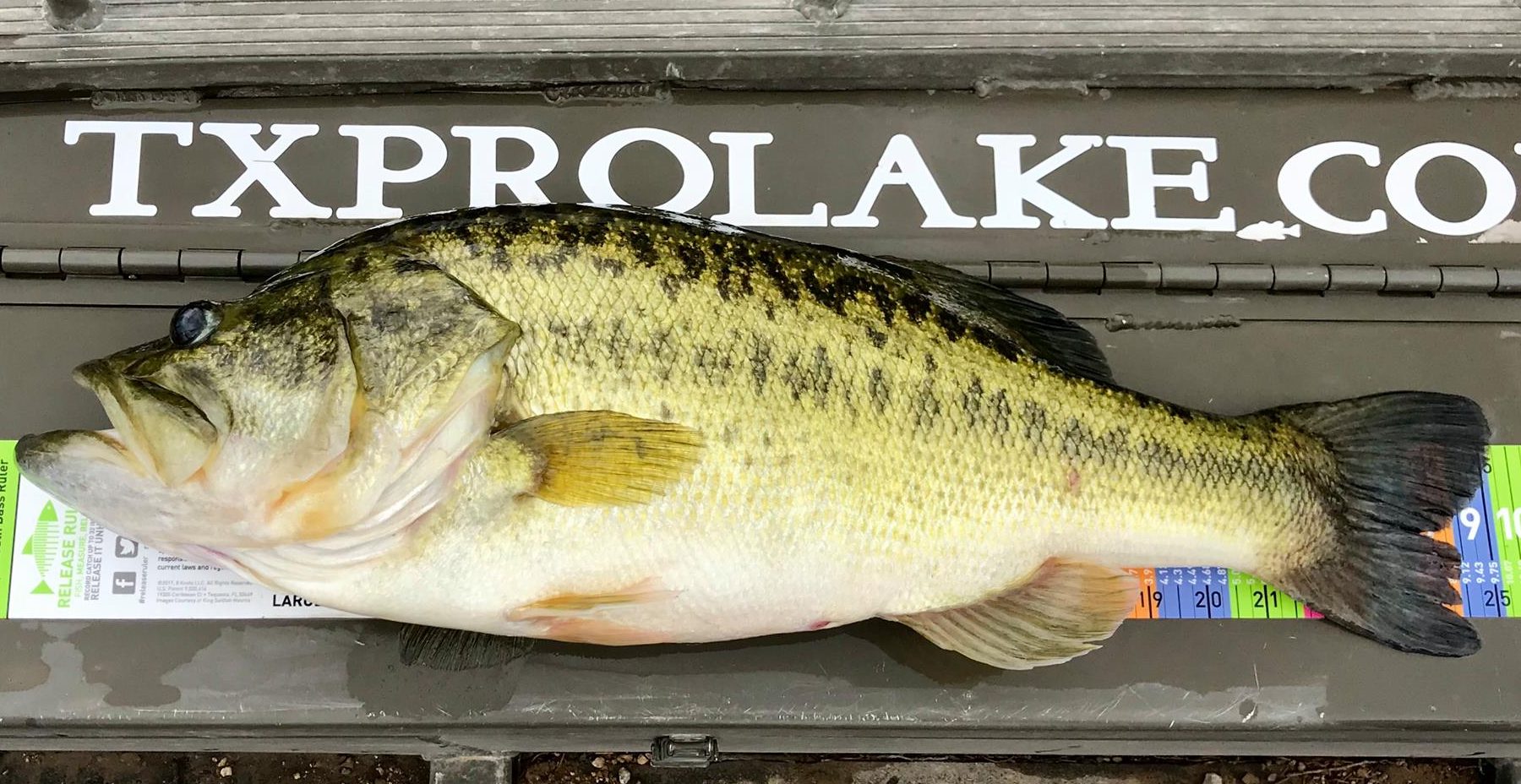
Largemouth Bass are the most common game fish stocked in Texas lakes. The Native Largemouth Bass, Florida Largemouth Bass, or crosses of the two are most commonly stocked. The genetic of the Bass you stock will determine overall growth potential and catchability. In most situations Bass need to be stocked in lakes at least one surface acre or larger. In smaller lakes maintaining proper forage fish populations becomes difficult and expensive. The most common forage fish for Largemouth Bass is Bluegill Sunfish. Using a diverse food chain of Bluegill Sunfish, Redear Sunfish, Fathead Minnows, and Golden Shiner Minnows can prove to be very beneficial in initial stocking. Forage species such as Threadfin Shad, Tilapia, Goldfish, Crawfish and freshwater Prawns can be beneficial options for supplemental forage stocking. Outside of forage and genetics the primary determining factor to the size of Largemouth Bass in your fishery will be the amount of harvest you implement annually.
Channel Catfish
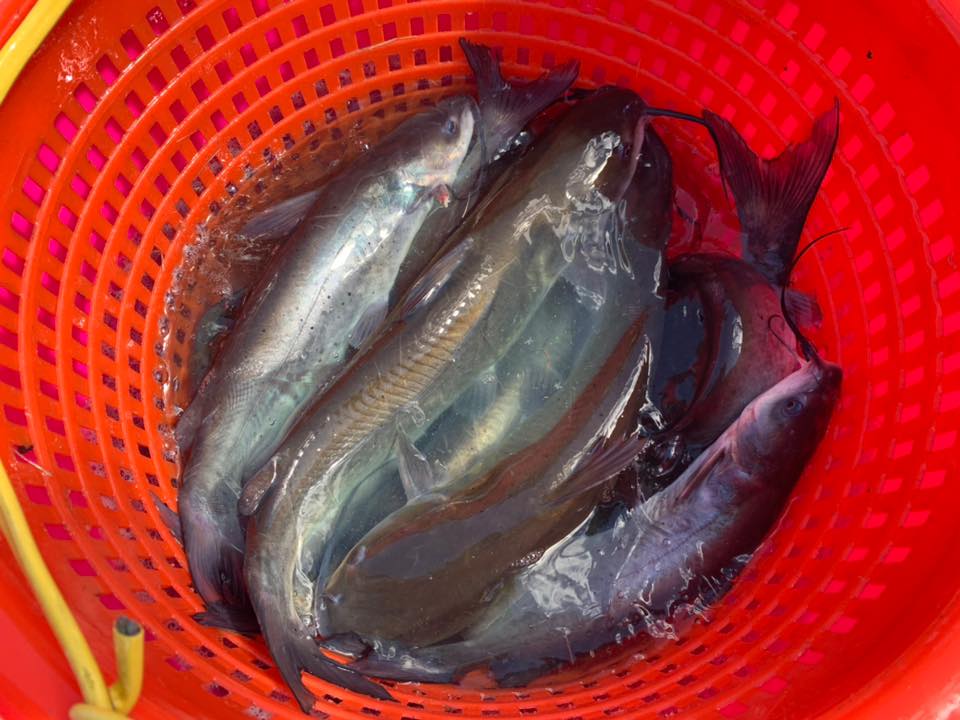
Channel catfish are a fairly easy to manage fish. Channel catfish can be stocked in any size lake. They only affect forage fish populations as they increase in size beyond 5 lbs. The most common forage fish used with Channel Catfish are Fathead Minnows and Redear Sunfish. If a secondary fish is desired Hybrid Sunfish can be a viable option. Channel catfish should not be stocked alone with forage fish such as Bluegill Sunfish because they will reproduce too often and cannot be efficiently captured by Channel Catfish. Channel Catfish eat a diet containing insects, mollusk, crustaceans, fish, and some vegetation. Once they become large adults Channel Catfish can become more efficient predators and consume some forage fish. In most ponds Channel Catfish will not reproduce, but in the presence of any cave-like structure they will successfully reproduce in high numbers. Most pond owners enjoy feeding their Catfish a floating fish food. The common recommendation is to not exceed 10 lbs per acre per month, but we recommend to also ensure that no feed remains floating for more then 2 minutes.
Crappie
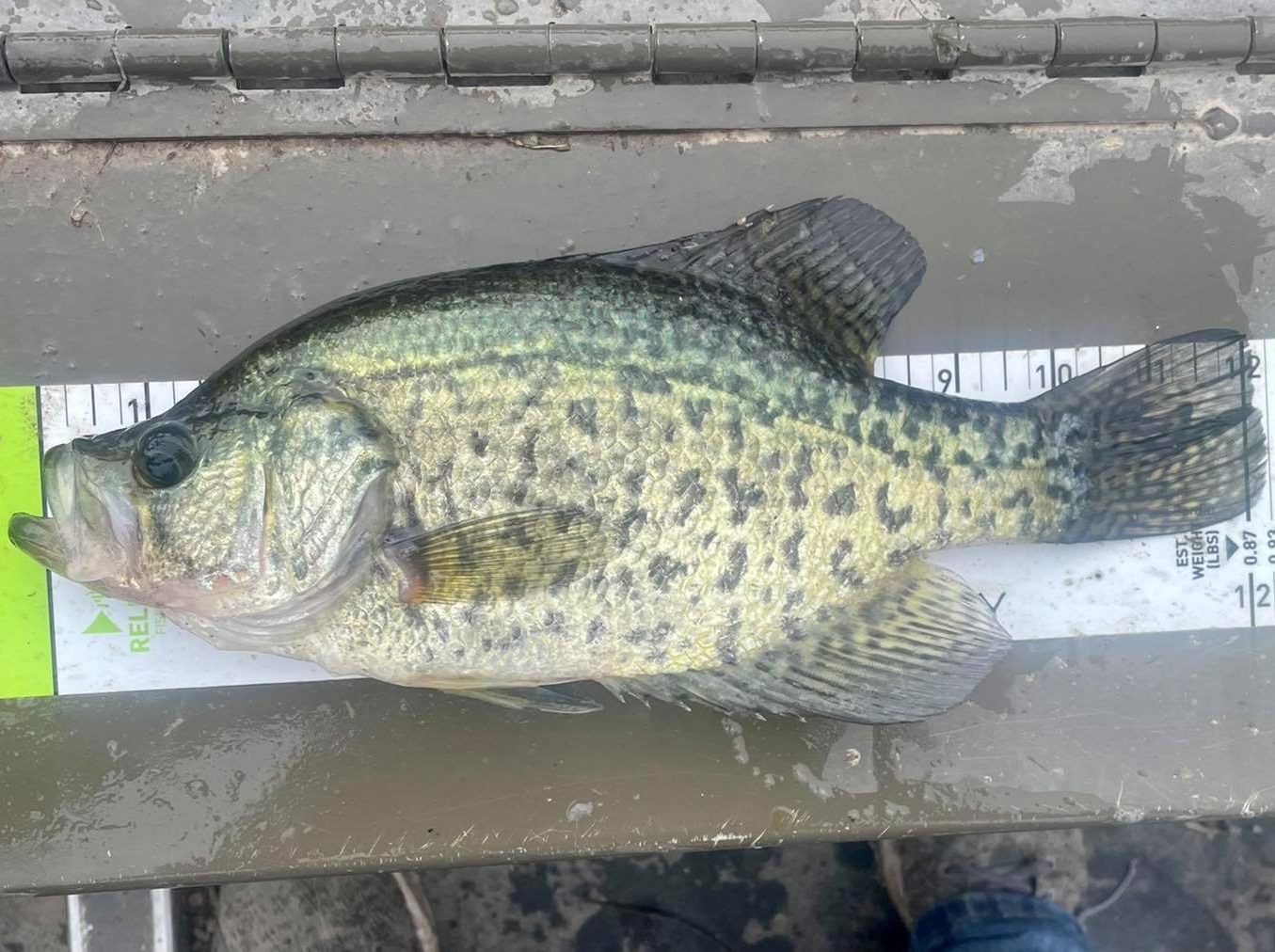
Crappie in general are difficult to manage in most private lakes. Usually crappie will be difficult to catch, grow slowly, overpopulate, and eventually exhibit stunted growth. Using Black Crappie is somewhat safer because they tend to reproduce less than White Crappie. The use of a hybrid Crappie a cross between black x white is considered to reproduce even less then the pure strains. With smaller Crappie lakes there are four keys to follow for success. First stock abundant soft forage including Fathead Minnows, Golden Shiner Minnows, and where available Threadfin Shad. Second provide vertical structure in several locations for Crappie to school around. Next minimize competition by stocking Crappie as the only reproductive game fish species. Finally control Crappie reproduction through your initial stocking and then via a secondary non reproductive predator like a Hybrid Striped Bass. In larger lakes you likely can support enough soft forage to have both Crappie and Largemouth Bass.
Hybrid Striped Bass
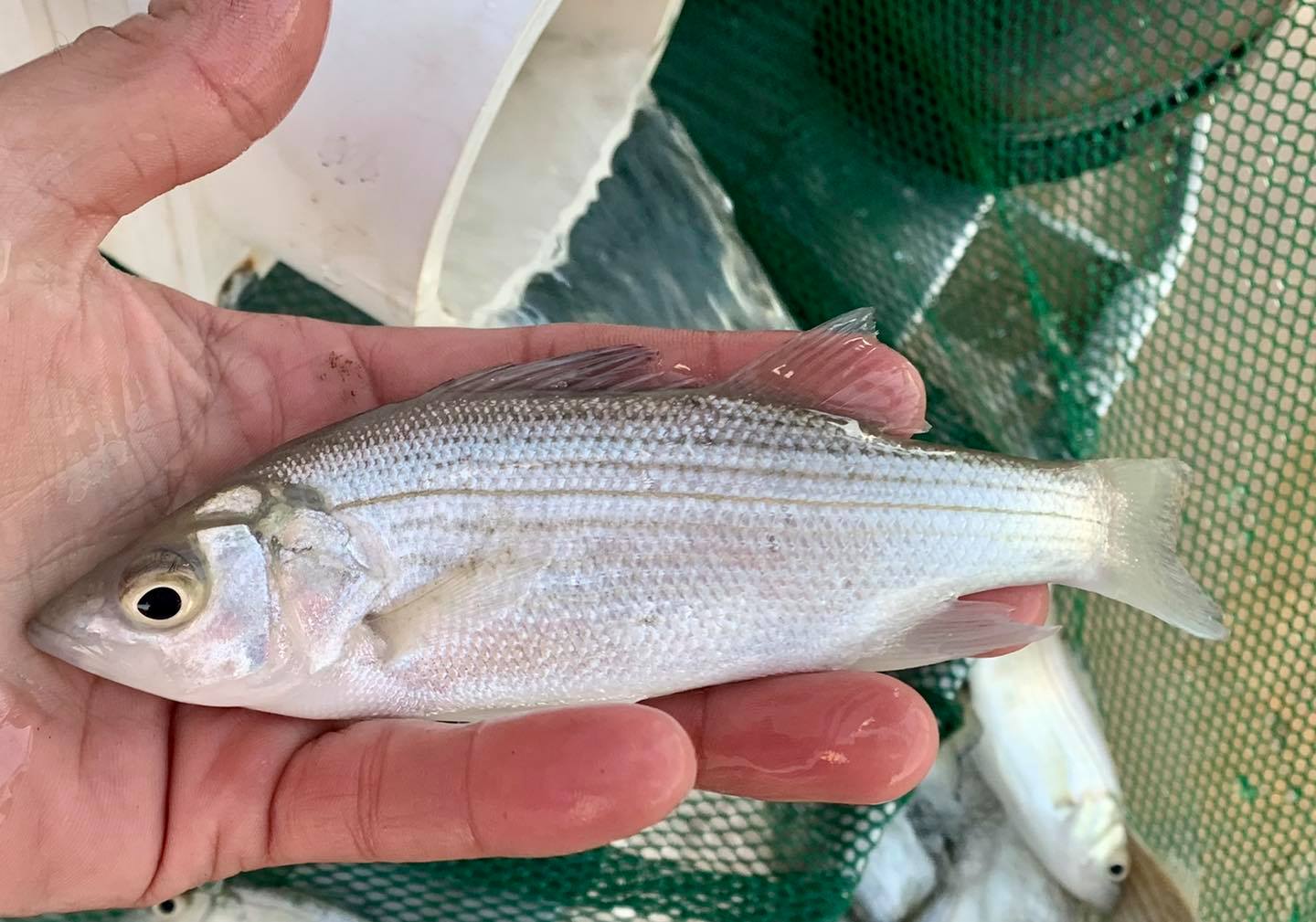
Hybrid Striped Bass are an extremely aggressive and active predators that consume forage constantly. They can grow beyond 10 lbs and cannot reproduce making them a great additional game fish to manage for diversity. Hybrid Striped Bass can be also be used as a tool to control Bluegill Sunfish or Crappie populations. In most cases the Hybrid Striped Bass stocked in lakes will be a feed trained fish which will consume a floating pelleted fish food. The stocking of Hybrid Striped Bass should be done only after discussing the possible outcome of their addition to a stocking program.
Hybrid Striped Bass Length Weight Chart
Downloadable Relative Weight Calculators
Right Click the species and save the excel form for your personal use
